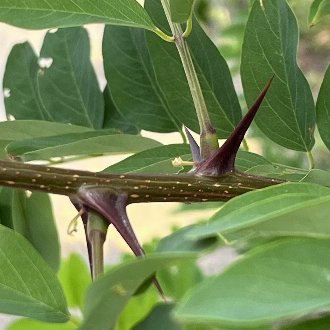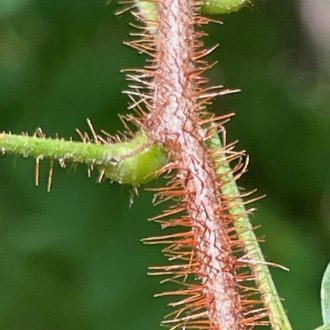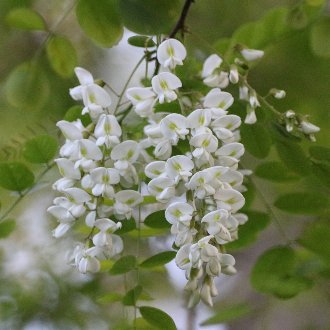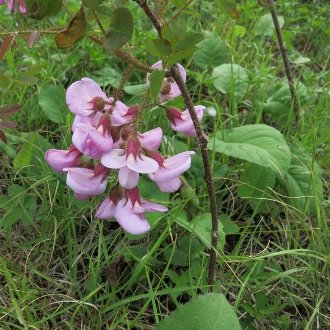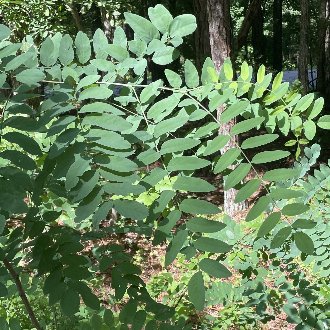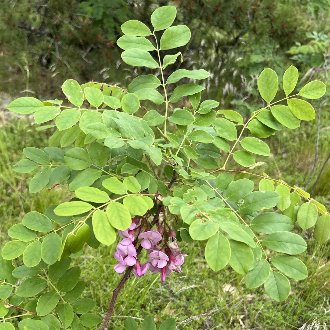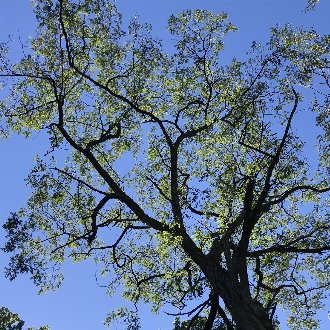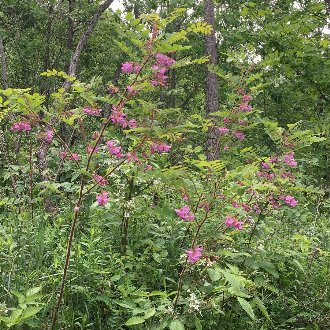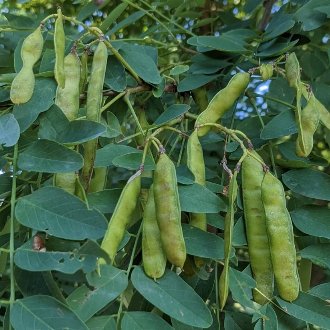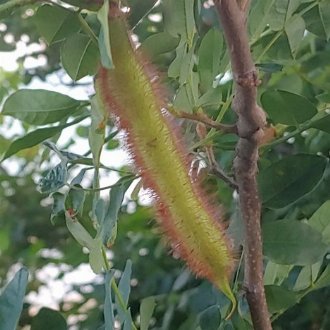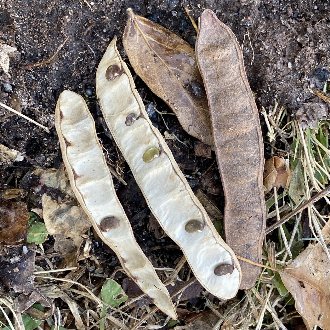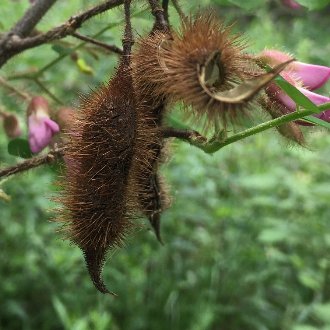Black Locust vs Bristly Locust
This guide is under construction and has not been published yet. It may have errors. When in doubt, double-check other sources for definitive ID.These two species can be confused where their ranges overlap, but are usually easy to tell apart at any time of year. The flowers and seedpods are distinct, and the presence or absence of bristles vs. spines on the twigs, and growth habit can also distinguish them. Bristly locust is more tolerant of shade and drier conditions, and sandy or clay soils, but is less common and widespread, which may reflect its less-frequent use in landscaping more than innate habitat tolerances.
Black Locust (Robinia pseudoacacia) | Bristly Locust (Robinia hispida) |
A nitrogen-fixing tree native to North America, having expanded its range in nearly all directions due to human intervention. | A nitrogen-fixing shrub to small tree native to the southeastern US but having greatly expanded its range north and westward. |
Twigs lack bristles or stiff hairs, but have large spines, usually occurring in pairs at each leaf node, but sometimes missing on older twigs, or on thornless cultivars or their descendants. Photo © Steve Taylor, CC BY 4.0. | Twigs are covered in stiff red hairs, but lack spines. Photo © Tom Scavo, CC BY 4.0. |
Flower clusters average longer, and are white. Plants usually do not bloom until they are at least 6 years of age, at which plants are usually 12-15 feet tall. Flowering period is slightly shorter in most regions. Photo © jyoung2399, CC BY 4.0. | Flower clusters are shorter, usually rose-colored, occasionally deeper pink. Plants may bloom when very young, with flowers only a few inches off the ground. Flowering period is slightly longer in most regions. Photo © Evan M. Raskin, CC BY 4.0. |
Leaves usually have 7-23 leaflets. Photo © Liszák Kristály, CC BY 4.0. | Leaves usually have 7-13 leaflets. Photo © Annie Weissman, CC BY 4.0. |
Although it sometimes has a shrubby habit, it can grows into a medium-sized tree, to 70 feet tall. Photo © Michael Pirrello, CC BY 4.0. | Always limited to being a shrub or very small tree, rarely more than 8 feet tall. Photo © Bonnie Isaac, Public Domain. |
Seedpods not covered in bristles. Photo © Jacob Saucier, CC BY 4.0. | Seedpods also covered in bristles, reddish when pod is still green. Photo © Ryan Sorrells, CC BY 4.0. |
Smooth seedpods are longer (often more than 3 inches), stay flatter when dried, and contain more seeds (4-8) on average. Photo © Sandy Wolkenberg, CC BY 4.0. | Bristly seedpods are shorter (usually less than 3 inches), curl more dramatically when dried, and contain fewer seeds (3-5) on average. Photo © Bonnie Isaac, Public Domain. |
References & External Resources
These short lists show only links helpful for ID. For a complete list of references and resources also covering other aspects of ecology, visit the links section of the full article on each plant, which is the first entry here.



